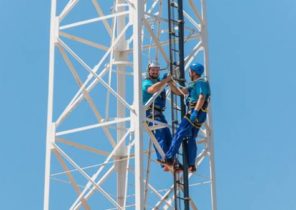
The world is unpredictable and chaotic. Sometimes your train is late; sometimes rains when it is not needed; in the pharmacy is not your favorite dental floss. Boundaries are broken, rules are ignored. Green spinach on your plate in contact with the chicken, and someone buys your boxers at JCPenney Kmart instead. People difficult to understand. Sometimes they do not fulfill the promises that are given; it is not clear that they have to face — a smile or a sneer, but if they smile, for some reason. People say something does not mean they are joking and being sarcastic. The minds of others — a foreign country where we are guests, or tourists, or strangers we don’t know where we are and what we expect.
Some silently accept, that so our imperfect world, and feel in this life as good as possible. Others find it unbearable. And to cope with it, they build real and psychological environment where things are more familiar and better systematized. The reassuring repetition, whether it is environment, language skills and body movements. Follow this order of things may be in different degrees it is important for such people, it protects them with more or less success, and when something does not work — the reaction be different shades of despair and alienation.
The world has always been unpredictable and erratic, and some always believed it’s unbearable. But with autism or related disorders — Asperger’s and (according to the modern official title) of autism spectrum disorder — was not always known. Autism was discovered and identified as a separate pathological condition by two physicians, working independently from each other during the Second world war. First — Leo Kanner, an Austrian immigrant, worked at the Johns Hopkins University; the second, Hans Asperger, who worked in Nazi-occupied Vienna and whose discoveries were little known in English-speaking countries until the early 80-ies.
The discovery of autism, it’s belief that it has always existed. Retrospective diagnosis — now this is something like a specialization as psychologists, and historians, and a directory of famous personalities, placed in a range that includes Newton, Mozart, Beethoven, Jane Austen, Kant, Jefferson, Darwin, Lewis Carroll, Emily Dickinson, and Wittgenstein. But in the past also there were many unknown people who could put such a diagnosis. Some of these unsociable social outcasts probably not once received a wrong diagnosis: for example, they were told that they are suffering from many mental disorders — “imbecility”, mental retardation, schizophrenia. (This is evidenced by the fact that Kanner used the word “autism”, derived from the Greek “himself” and denotes in those days attributed to schizophrenia social isolation.) Sometimes they were treated with appalling brutality, sometimes with surprising tolerance. Some have lived their lives outside historical systems of medical diagnosis and medical management, and most likely they just thought “eccentric” is one of the accepted ways to be acceptable abnormal.
In the result of the findings of Kanner and Asperger’s has helped translate many of the people from one mental category to another. In the early XX century children, which in our days was diagnosed with autism, was frequently in psychiatric institutions. Their parents were advised to live their lives and forget about their unfortunate children, whose symptoms usually started to appear around the age of two years. A new category of Kanner became good news for parents who were unable to regain their children, imprisoned in special institutions, in the belief that this intelligent, feeling man, clad inside of what is sometimes called the “mask of autism”.
The history of the discovery of autism — the story of how the term entered the lexicon of psychological examination and in daily speech, and history repeated discussion of its features. The book “Understanding autism” by Chloe Silverman is the most sensual book written by academic historian and the bestselling Steve Silberman “Neuroplegia” is a long — standing history of autism, which ends with a discussion about how we should be thinking about today. And now comes “In a different way: a Story of autism” John Donvan and Karen Zucker (crown). The authors are working journalists, and, like many writers on this topic, they have a personal interest. Half-brother of Donven autistic. Zucker’s son is autistic, and grandson of Robert McNeil, the former presenter of the PBS NewsHour, a producer of several episodes which came from Zucker. Accordingly, the main direction of the book — autism in the family and the historical role of parents in the lives of autistic children. “In a different way” — a story about autism and how its definition has evolved through many American institutions. It was the result not only of the work of psychiatrists and psychologists, but also from parents, schools, politicians, lawyers. The book shows how this phenomenon has gained the ability to change these institutions and to challenge our ideas about what is pathology and what is normal.
The introduction of autism as a separate pathological condition, of course, helped countless patients and their families, but as they say Donvan and Zucker, all is not so simple. Shortly after the opening of Kanner autism was considered a developmental disorder caused by poor parenting, especially from mothers who were not attached to their children and have children, incapable of love. The villain in this situation — another Austrian immigrant, Bruno Bettelheim, who because of his doctorate in art history and an incredible arrogance persuaded the Ford Foundation to Finance his research and the high office of a child psychologist at the University of Chicago. In an article entitled “Joey the mechanical boy,” published in Scientific American in 1959, Bettelheim put forward the idea that autism is a rational reaction of children who are due to lack of maternal love has turned himself into a machine. Bettelheim believed that to heal these children can, gradually introducing them emotions.
Kanner also inclined to charge mothers. And although it was initially believed autism “innate”, then he took responsibility for the creation of the term “cold mother” to describe the cause of autism in Bettelheim. In the end, Kanner refused it and returned to his original point of view: “I hereby acquit you as parents”, he said to the mothers and fathers of children with autism, in 1969. To the accumulating signs of a neurological element: there were many families in which some children were sick, and others were not and there was no indication that these parents were more cold towards children with autism than in others. Later research has shown that identical twins are more susceptible to the division of autism than fraternal, which has been suggested the existence of genetic reasons. The search for the origins of autism for some time were mostly neurologists and geneticists.
No matter how harmful the old delusion, they helped increase awareness about the condition. The first few decades since the publication of the original work of Kanner, few people knew or at least heard about autism. But if you look at “Show dick Cavett” in 1971, you can see how Bettelheim calls autism “the most severe psychotic disorder in children, known to mankind.” For parents of such children awareness is critical. It’s a terrible experience to have a child who does not speak, who does not want to touch him who does harm to himself, which requires order, which parents cannot provide, whose eyes are not the mirror of his soul, and besprovodnaya black whirlpool. Public acceptance is vital, as for their own sake, and for the mobilization of resources for treatment, support and possible achievements of the recovery. How it was achieved this recognition is an important part of the book of Donvan and Zucker. Carefully prepared performance of Dustin Hoffman in “rain Man” in 1988 is almost certainly marked the turning point in the culture. Then some people began to understand this more and better than others, but most only knew that there is a condition called autism, and had some ideas about how to behave sick. Since then, the popular concept was further developed in the recent works of Oliver sacks, in his book “Anthropologist on Mars” 1995; in the book “Thinking in pictures” temple Grandin, autistici, a famous Professor and expert in the animals; in the novel by Mark Haddon, published in 2003 under the name “Mysterious night murder dog”, where vividly described how the world perceives a child autistic.
All of this has developed a campaign to increase awareness, but in the center “In a different way” is the energy and ingenuity of the parents. One of the characters in the book is Ruth Sullivan. When her son was diagnosed with “autism” in 1963, she found acceptance, support and treatment. Moving from one state to another — she was the wife of Professor Sullivan was one of the founders of the National society for autistic children which has forced schools and legislative bodies to recognize the condition and provide people with autism the relevant terms. She skillfully attracted powerful friends of politicians. After just a few years after she moved to West Virginia in 1969 and began to settle there, the state became the first in which a motion was adopted requiring schools to offer special education for autistic children.
Parents like Sullivan, refused to take their children to psychiatric wards or to blame for the occurrence of the state, gradually forming intricate groups of activists with different agendas and different concepts about what constitutes autism. They all insisted that “we need to do something”, but broke up when it got to the point that it still is and what to do about it.
One of the first types of therapy for autism was applied behavior analysis (DAD), a radical program of behavior modification, which is a Norwegian-American psychologist Ivar Lovaas began to develop in the sixties. After the initial ill-use of “negative reinforcement” — punishment, including the use of electric shock, to prevent unwanted behavior — Lovaas and his colleagues stayed in intensive mode gradual positive encouragement of desirable behaviour. By 1987 Lovaas claimed that he was able to restore the normal behavior of 47% of their patients — and this at a time when many experts believed that autism is incurable. Some physicians and public figures were skeptical, others took DAD with fanatical enthusiasm. In any case, the critical moment was that DAD was intense — requiring up to 60 hours of expert attention in a week for two-three years — and expensive. According Donvan and Zucker, in the 80s the cost of a full home individual programs DAD could reach 50 thousand dollars per year, and parents took out a second loan in addition to mortgage in order to pay for it.
At this stage started to bring the results of the parent lobbying legislative bodies. In 1990, the “Act on educational services for persons with disabilities” autism was mentioned among the conditions that should be included in all budget schools. If the school resisted, the parents could file them in court. The school relented. This project was deprived of the resources of other worthy recipients, and many suspected that DAD, according to Donvan and Zucker — “just another fashion therapy”. But some parents were Sutyajnik, and lawyers, and school began to lose dozens of so-called “Lovaas”. We can assume that the law has decided that effective from a medical point of view, and we can assume that is decided by parent-activists. But it would be better to say that the law responded to the parent view.
Between the law, activists and optimistic therapists it was decided: the lives of children with autism can be greatly improved, and the treatment is possible. But where there are doctors, there are “healers”. The hype and even fraud are inevitable aspects of the history of autism. Therapy practice the “facilitated communication” (OK), popular in the 90’s, asserted that to overcome the obvious linguistic difficulties of autistic children and let out sociable “inner child” through a “mediator” that supports the child’s hand choosing letters on the Board in front of him. “We have to understand that not being able to speak does not mean do not want to say anything,” claimed one of the supporters of the practice, though skeptics warned that OK “no more real than a seance”. Soon began to show shocking evidence of sexual abuse. With the help of an intermediary, a girl with autism in Maine, wrote that her father “FUCKS ME AND FUCKS ME ONN AND HE MAKES ME KEEP IT PENNESS”. And the girl and her brother (who was also suspected in the violence) was taken to an orphanage and placed in foster families. Parents who believed in OK, but faced with allegations of abuse against a child, were now able to defend himself, only calling his own daughter a liar. The charges were dropped.
Eventually OK was discredited. In a simple but elegant experiment designed by the researcher speech pathology Howard Shane, the facilitator and the autistic were simultaneously shown pictures. Between them was a partition, so they are not seen pictures of each other. The mediator was able to support the child’s hand when he typed the word, responding to what he saw. Sometimes they were shown the same picture, sometimes different. Children could give the correct answer only when they are with the facilitator were shown the same pictures. If OK and showed someone’s communicative desire, only the desire (perhaps unconscious) of the facilitator, not the autistic.
A later fraud bad effects of which we feel to this day — vaccination panic that began in 1998. In that year, in the prestigious medical journal the Lancet published an article, the main author of which was a British gastroenterologist Andrew Wakefield. In this article it was suggested causal link between vaccination against measles, mumps, and rubella (CSC), which was done by children since the early seventies, and mental problems of autistic people with digestive disorders that often accompany autism. Wakefield promoted the hypothesis that the increase in autism associated with the introduction of mandatory vaccinations KSK and that the solution of mercury used as a preservative for the vaccine was the most likely culprit. Parents gladly accepted scientific theory, finally found a specific physical source of autism. In the US social movement “mercury moms” was so effective that one of them went to the Federal body that determines policy on autism. The fact that the scientific and medical community as a United front to convince the public of the safety of the KSK, it didn’t matter — the activists believed it was proof of a conspiracy. But Wakefield turned out to be a fraud: he was interested in promoting alternative treatment and misrepresented the data. The Lancet withdrew the article, and the editor of the magazine declared it “completely false”. The British General medical Council declared Wakefield “dishonest”, and he was expelled from the medical register. Most affected children whose parents fear refused to vaccinate. Immunization rates plummeted and cases of measles, some of them fatal, were frequent.
By the end of the last century the increase of cases of autism — according to one estimate, every 88th child in the United States suffer from this disorder gave rise to talk about the “epidemic” of autism. But, as is often the case, it is difficult to say what we observe: growth in the number of diseases or frequency setting of the corresponding diagnosis. The first serious attempt to measure the prevalence of autism was made in the UK in the 60-ies. Researchers soon faced with the problem of having completely different definitions from different authors. To find out what percentage of the population has autism, we had to decide what it is all about. The experts could not come to a consensus, not only on how to call this condition, but also regarding its diagnostic criteria. One British child psychiatrist, wrote: “No way to be sure that all these authors are talking about one and the same state”.
In the mid-sixties, the psychologist who worked at the Maudsley hospital in London, has compiled a list of twenty-two diagnostic features. He was sent out to the schools and hospitals of the district questionnaires, and then personally examined children that, in his opinion, answered a sufficient number of criteria for further research. He found that children with certain characteristics showed a more limited capacity, compared to the rest. The psychologist divided the sample, having, by his own admission, arbitrary line in the data array, and gave the first estimate of the proportion of patients: 4.5 out of 10 000 “appropriate age” the inhabitants of London, or about 1 in 2200. This was an important discovery, which at the same time caused a lot of controversy, but ultimately more important was how difficult it was, in principle, to determine the rate. British psychiatrist Lorna wing (she is a mother of a child with autism) has focused on the “almost suitable” children, meet certain criteria, but not recognized by the autistic. During the 80-ies of the wing attracted the definition of autism not as a specific entity, but as a “continuum” where some children “were on the verge of normality”. In the end, to describe this continuum, she chose the term “spectrum”. In this context, the work of Asperger’s, written in time of war, has finally attracted serious attention in the English-speaking world. Husband wing, who knew German, translated for her job, and she has published her report about what she called Asperger’s syndrome.
Unlike Kanner’s patients, children with Asperger’s syndrome have good language skills and some had their cognitive skills in such areas as mathematics. For wing Asperger’s syndrome was not a separate disorder — it took place on the autism spectrum. She was not only a theoretical goal: as an activist, she wanted to increase the number of people receiving a diagnosis of “autism” and, as a consequence of receiving the necessary assistance. (A few years ago it became known the words of one child psychiatrist working in the National institutes of health: “I call the baby Zebra though, if so I can give him all the help he, in my opinion, needs”.)
The expansion of diagnostic criteria has inevitably made the definition of autism is even more blurred. This can best be seen in the DSM — Manual for diagnosis and statistics of mental disorders of the American psychiatric Association, which since 1952 have an official definition of all psychiatric conditions. Autism appeared in the DSM until 1980, and with each new version of its definition and diagnostic criteria have varied. At first it was called “infantile autism”, then the name was changed to “autistic disorder”, and it is now called “autism spectrum disorder” (ASD). Asperger’s syndrome was added as a separate condition within the spectrum, but it’s gone now, merged with ASD. DSM not only defines the state but also makes it institutionally significant. Since the 80-ies in the school districts, the standards of the DSM are used to determine whether children receive the necessary assistance.
Now there had been General agreement that autism is a condition caused by neurological and chemical processes, and the important role it plays in the genetic aspect. However, the search for specific causes is still not finished, and it is unlikely that any single factor will ever be declared the root of all instances of the currently recognized spectrum. Medications either. If you “get in range”, you can never feel like other people, but with proper therapy you can learn to seem similar, and this is a lot. Many adults with autism live independently, but at the same time, many can’t. In fact, the ability to live independently is an important factor in determining whether a person is “high functioning” or “nizkorentabelnym”. This distinction exists in everyday life, but is no longer used in the official psychiatric literature.
There are obvious reasons for believing the progressive history of autism: quality of life of many people with a diagnosis of the spectrum has definitely improved. However, this same story has been criticized by adherents of the so-called theory of medicalization. This set looks vaguely associated with the works of Michel Foucault, is a critical position in relation to modern trends to fit human behaviour into the category of medical pathologies that require expert diagnosis and care. For some authors and activists of the medicalization — a struggle for power, and the main villains in it is a greedy industry pharmaceuticals and arrogant psychiatrists who jointly pushed the pills for States of mind, to which nothing can be done or need to do, and which belong to the sphere of individual moral responsibility, not medicine. Categories of diseases, developed by modern psychiatry and psychology, for example, social anxiety disorder and mixed anxiety-depressive disorder, are the most popular target of the critics of medicalization, and autism.
Thus, after more than 70 years after the publication of the works of Kanner and Asperger, we are dealing with a serious discrepancy in opinions about whether autism is actually a medical phenomenon, whether it is illness, a disability or a variant of normal behavior. The most actively their opposition just expressed by many of those who were diagnosed with “autism spectrum disorder”, giving them the recognition and support that people receive from “spectrum”. Some social movements deny the very idea of therapy, stating that there is no pathology that should be treated. They say that just as we learned to welcome racial, ethnic, Packed diversity, we must learn to welcome “neuroarthropathy”. Journalist Harvey Blume in his article for The Atlantic even said that “neuroarthropathy can be just as important for humankind as biodiversity is for life in General.” Donvan, and Zucker, are generally neutral stance on the issue, politely welcoming the recognition of the “human dignity of people different from the rest because they are in any way applicable to this determination.”
Advocates of neuroarthropathy learned a couple of tricks from history, despite their desire to make the most of this history has been forgotten or called a history of medical folly. One of them is to assign the spectrum of characteristics is extremely valuable for “normal” social roles and they have already seen how useful and fun to challenge the meaning of the word “normal” and find very caustic definition symptoms “neurotypical” patients: “concerns about social problems, delusions of grandeur, and obsession with conformity”. Advocates of neuroarthropathy lead with parents of children with severe form of autism conversation, full of pain and irony. Activists insist that there is nothing to say about the disease and there is no need to undergo program of treatment; the parents are outraged that the activists that are on the high functioning side of the spectrum, do not understand the serious problems facing children on the opposite side, and ignoring advances in treatment and public attitudes, to which people went a lot of years.
Meanwhile, the terms “autism”, “Asperger’s syndrome” and “spectrum” is out of the scope of psychiatry and came into use. If we all have tendencies of the spectrum and manifestations of Asperger’s, so these designations do not make sense as a medical category. Facilities stretched to the limit, and autism is now on the social boundary between what is considered normal by pathology, between eccentricity and something that needs to be treated. These questions are part of our morality, and we cannot expect that they will decide medicine, clinical research or even the law.







